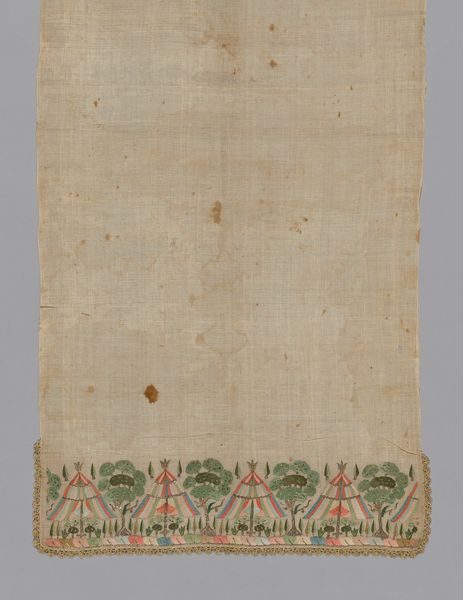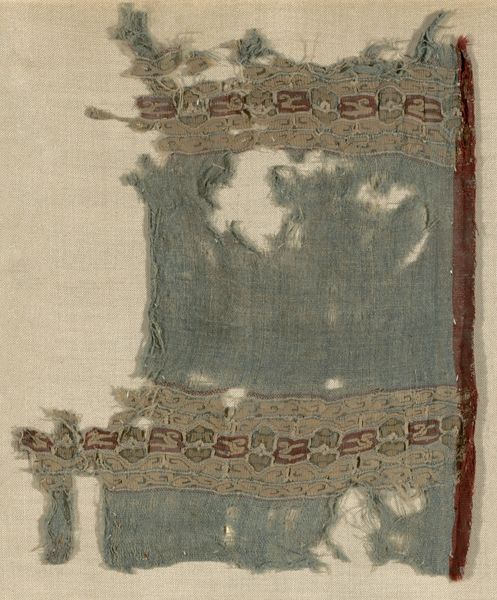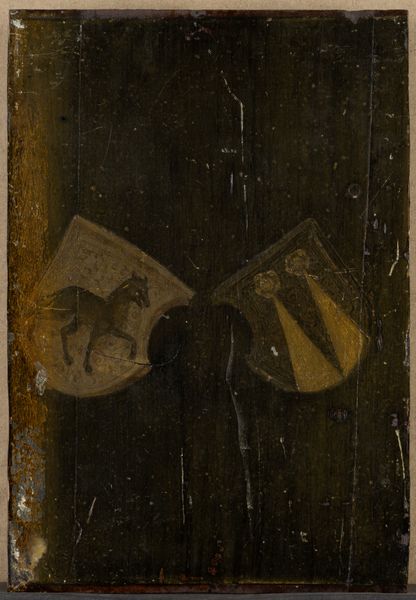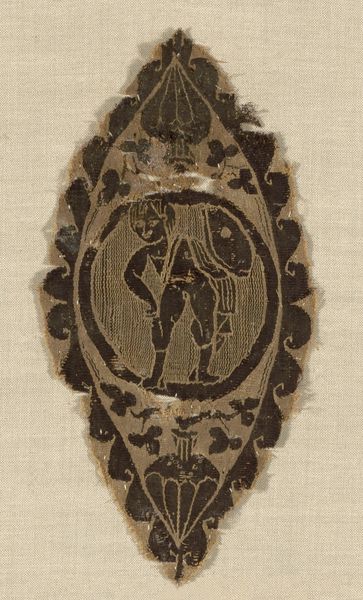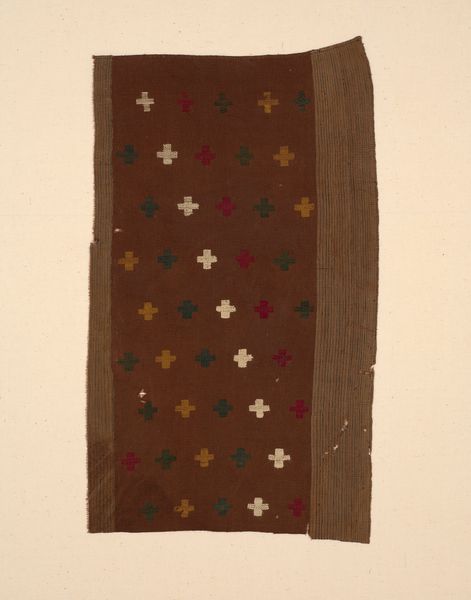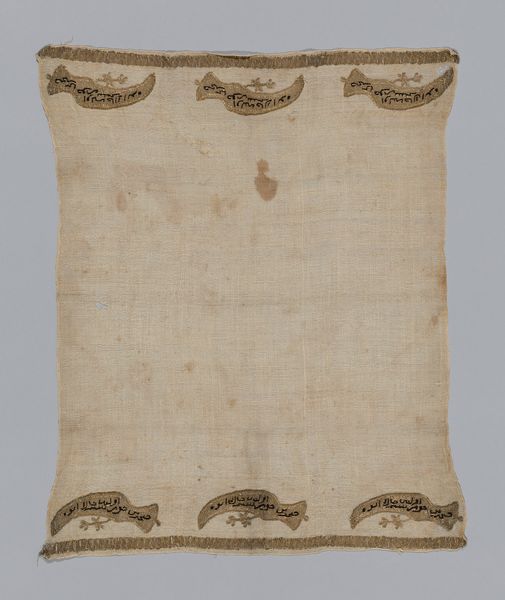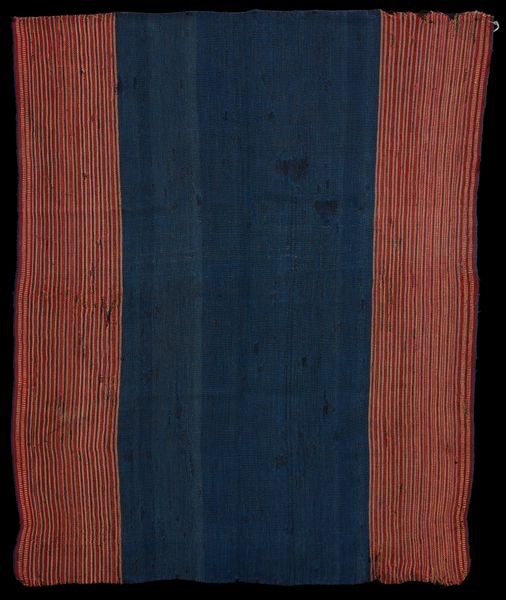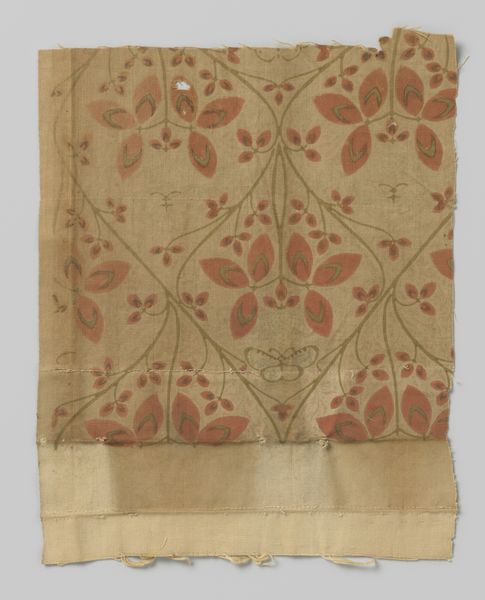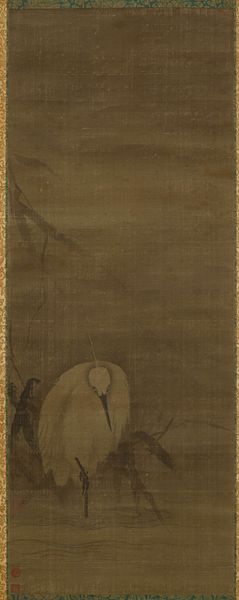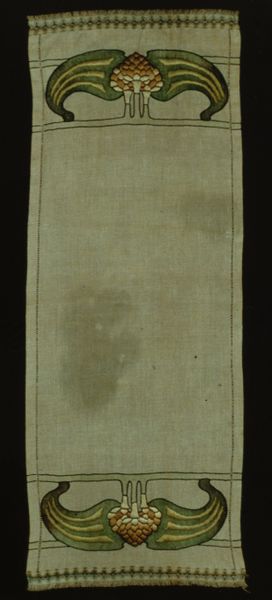
silk, textile
#
silk
#
pattern
#
textile
#
hand-embroidered
#
historical fashion
#
wearable design
#
united-states
#
decorative-art
Dimensions: 29 1/2 x 16in. (74.9 x 40.6cm)
Copyright: Public Domain
Curator: Here we have a textile piece, "Bag with Flap," created anonymously, most likely in the United States, sometime around the 20th century. It resides here at the Minneapolis Institute of Art. It's silk, I believe, hand-embroidered. Editor: My immediate response is how understated yet bold it is. The neutral silk forming the body of the bag allows the geometric designs on the flap to really stand out, offering an intriguing blend of functionality and artistic expression. It's a very early twentieth-century vibe, reminding us that functionality in garmentry can, and should be art. Curator: Indeed, the designs evoke both Art Deco and perhaps even vaguely Egyptian motifs. The stitched arrowheads and stacked forms appear in diverse contexts; in textiles like this, they resonate with power—a nod to authority, or a visual stamp asserting a personal or societal direction. I sense that the hand-work really humanizes the design, bringing out emotional and intimate connections that resonate through generations of users and viewers. Editor: Precisely! It makes me consider how the socio-political landscape influenced these decorative choices. The era saw increasing dialogue around women's roles and societal expectations, with textiles becoming powerful ways to visually communicate cultural tensions. The wearer subtly challenged or conformed to norms. We must remember that adornment itself can function as defiance. Curator: I completely agree; textiles offer such fascinating insights into a society's psyche. And consider the materiality! The softness of the silk—does that symbolize luxury? What is being contained within that fabric envelope, and who decided it was worthy of so much meticulous artistry? I always believe in decoding what images are telling us about a culture. Editor: This artwork serves as a valuable mirror, doesn't it? Looking beyond the craft and delving deeper into the historical narrative enriches our understanding of past and contemporary societal struggles for justice, equality, and respect. It allows us to reconsider the purpose of art as activism. Curator: It all ties back to seeing these works, recognizing their symbolism and enduring social currency, and allowing history to inform how we see the present and shape our futures. Editor: It’s empowering to witness how this bag speaks to us today, offering insights and raising questions we can carry forward.
Comments
No comments
Be the first to comment and join the conversation on the ultimate creative platform.
